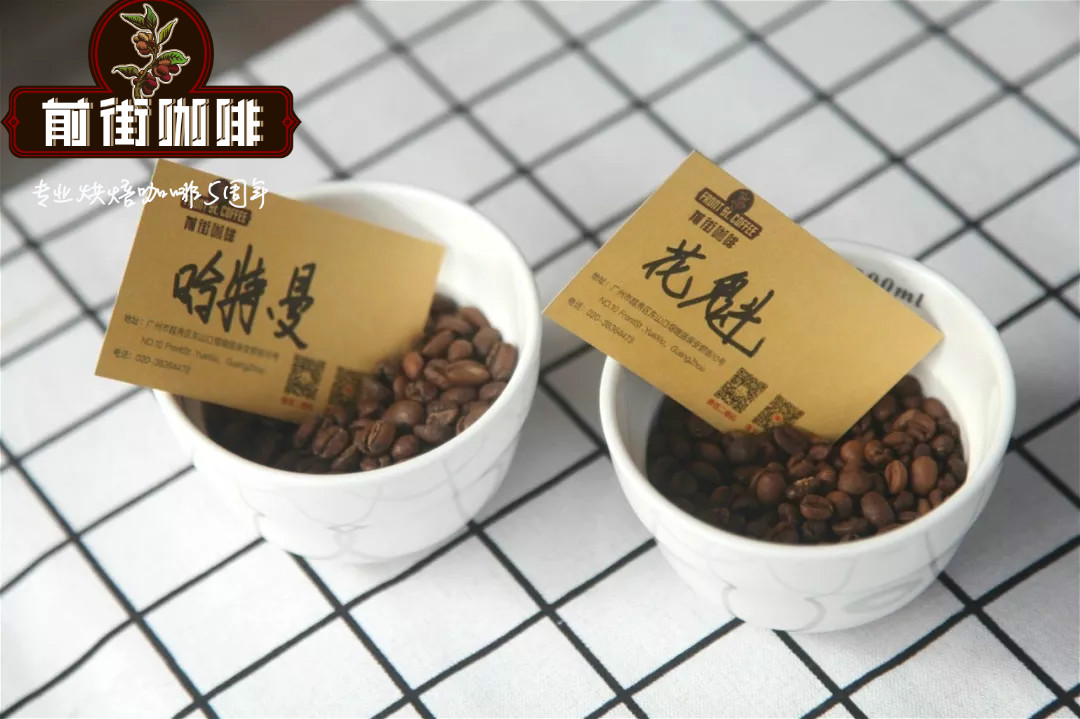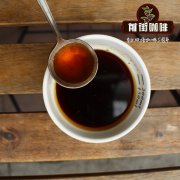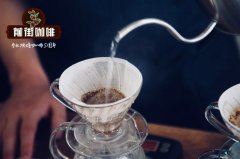Starbucks iced drop coffee. How to make iced coffee. How to make iced coffee.

Professional coffee knowledge exchange more coffee bean information please follow the coffee workshop (Wechat official account cafe_style)
Summer is coming, and for coffee lovers, there is nothing better than a cup of cold iced coffee. If you refuse to be high in calories, pay attention to the aftertaste, and are willing to explore new things, you might as well try the goddess drinks "Ice Drip Coffee" and "Cold Brew Coffee" in the iced coffee world this summer.
Compared with hot water extracted coffee, ice droplets and cold extracted coffee have a unique and wonderful flavor, and the cold taste is more suitable for summer. Not only that, a continuous N-hour extraction, with good-looking coffee utensils, before the entrance to see the ice as cool as an iceberg, has refreshed the whole body and mind, now let's learn about ice drops and cold coffee!
Ice drop coffee Cold drip coffee, also known as Dutch coffee (Dutch coffee). It is said that during the Dutch rule of Indonesia, many heavy-flavored Robusta varieties of coffee were grown in order to drink these rather bitter coffee beans in the tropics, they invented a device for brewing coffee with slowly dripping cold water. To put it simply, ice drop coffee is extracted at a low temperature by ice water to get a more fragrant, smooth aroma and taste like wine.
Although ice drop coffee was invented in the Netherlands, an interesting phenomenon is that you can hardly find this kind of coffee in the Netherlands, but it has caused an ice drop trend in Asia. In Japan, ice drop coffee has a history of hundreds of years, so ice drop coffee is also known as "Kyoto coffee" (Kyoto coffee) and "Japanese-style slow-drip" (Japanese slow drop). In South Korea, almost every cafe sells ice drop coffee, and many famous brands of ice drop appliances are from Japan and South Korea.
The difference between chilled coffee, cold extract (cold bubble) and ice drop coffee
Iced coffee ice coffee refers to a cold drink coffee that is quickly extracted with hot water and then added with ice or cooled rapidly. It takes about 2 to 3 minutes to make.
Advantages: convenient and fast
Disadvantages: the taste is easy to fade due to melting ice
Cold extract (cold brewed) coffee Cold Brew Coffee is definitely the hottest drink keyword in the world this summer. The concept of Cold Brew is similar to cold-brewed tea. It takes about 8-12 hours to soak a large amount of coffee powder in cold water below 5 degrees C and soak it at low temperature for a long time, also known as ice-brewed coffee.
Refrigerate for several hours and then filter out the excess oil and bottle it. This cold soaking method magnifies the various flavors and aromas of coffee, reduces acidity, and makes the flavor cleaner and purer. Cold Brew coffee is characterized by the fact that the more ice the coffee tastes, the better it is without dilution and ice cubes. It is more popular in the United States to add equal proportion of coconut water, which can drink more pure coffee flavor and sweetness.
The Dripo accompanying cup can be used as cold-soaked coffee or ice-dripping coffee, only ice water and coffee powder are needed. First put coffee powder, second put pill filter paper, three pour ice water to start production!
Advantages: since they have never brewed coffee in boiling hot water, cold water at a low temperature will not force out the impurities and bitter taste of coffee beans, so they prefer to use the Cold Brew method to brew coffee. This way of drinking not only tastes fresh and slightly sweet, but also tastes smoother because the sour and bitter tastes are relatively reduced.
Disadvantages: because the water has been in contact with coffee powder for a long time, the coffee in Cold Brew contains the strongest caffeine, which is very suitable for drinking when it is most necessary to stay awake.
Ice drop coffee refers to coffee that uses a drop of cold water at a uniform rate to extract flavor substances from coffee powder. it takes about 4 to 8 hours, depending on the size of the equipment. The taste of the extracted coffee will change according to the coffee roasting degree, water quantity, water temperature, water drop speed, coffee grinding thickness and other factors.
Advantages: the coffee is filtered with cold water, the coffee is 100% soaked and moist, the extracted coffee tastes smooth, not sour, and does not hurt the stomach. The coffee beans most suitable for making ice drip coffee are nothing more than deep-roasted Manning and fresh Yegashafi (Ethiopia).
Disadvantages: it is necessary to master the filtration speed, dripping slowly with seven drops in 10 seconds, the water and coffee powder have a long time fusion, so the coffee taste is more full; if the filtration time is too fast, the taste is too light, at the same time, it will produce stagnant water overflow, on the contrary, too slow will make the coffee ferment, produce sour taste and wine taste.
Small details that Qianjie Coffee suggests when making ice drop coffee:

1. Coffee beans: water: ice ratio is 1:5:5
2. You can press the powder, but not too hard. The weight of the powder press itself is enough. The purpose of pressing powder is to flatten the powder, not to compact it. If there is no powder pressing, it will be easy to soak the powder as soon as the water goes down, but if the pressure is too strong, the water will not go down, and it is easy to produce a channel effect.
3. Remember to put a piece of filter paper on the noodles. Because the tension of the filter paper can make the water distribute evenly, if there is no filter paper, the water droplets for a long time will drip out a pit in the powder bed.
4. Use ice water to "pre-soak". In fact, this is similar to the steaming process in hand flushing, which can improve the consistency of the extraction effect and the finished product. If the ice drops directly, it may cause uneven wetting of the powder layer, some of the coffee powder is overextracted while the other part is not involved in the extraction.
5. After making, it is best to pour the coffee into a sealed glass bottle and put it into the refrigerator to ferment overnight, so that the flavor of the coffee is mixed together, making it better and easier to taste.
Qianjie Coffee suggests using some honey-treated or sun-treated coffee beans when making ice drop coffee, which is rich in flavor, sweet and fermented, which is quite compatible with the production method of ice drop coffee.

Important Notice :
前街咖啡 FrontStreet Coffee has moved to new addredd:
FrontStreet Coffee Address: 315,Donghua East Road,GuangZhou
Tel:020 38364473
- Prev

What is a coffee cup test? Coffee cup test procedure. Coffee bean cup test.
Professional coffee knowledge exchange more coffee bean information please follow the coffee workshop (Wechat official account cafe_style) the so-called "cup test", just like tasting red wine to objectively and generally judge the sweetness and sour, bitterness, aftertaste and aroma of coffee, as well as its quality. The cup test is actually held in the producing and producing countries of coffee, and it is the most direct of the unique flavor of coffee.
- Next

Factors that affect the taste of coffee. What are the decisive factors that affect the taste of coffee?
Professional coffee knowledge exchange more information about coffee beans Please follow the coffee workshop (Wechat official account cafe_style) A cup of good coffee, 60% depends on the quality of raw beans. As a coffee practitioner, we should open up the pattern and learn more about the whole link of "From Seed To Cup" as much as possible. This is helpful to the link you are engaged in. After all, bakers bake according to the nature of beans.
Related
- Beginners will see the "Coffee pull flower" guide!
- What is the difference between ice blog purified milk and ordinary milk coffee?
- Why is the Philippines the largest producer of crops in Liberia?
- For coffee extraction, should the fine powder be retained?
- How does extracted espresso fill pressed powder? How much strength does it take to press the powder?
- How to make jasmine cold extract coffee? Is the jasmine + latte good?
- Will this little toy really make the coffee taste better? How does Lily Drip affect coffee extraction?
- Will the action of slapping the filter cup also affect coffee extraction?
- What's the difference between powder-to-water ratio and powder-to-liquid ratio?
- What is the Ethiopian local species? What does it have to do with Heirloom native species?

